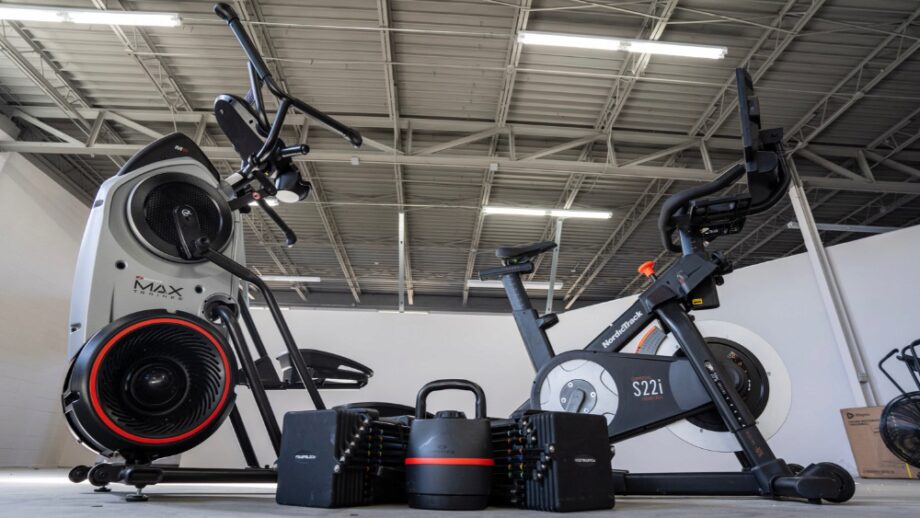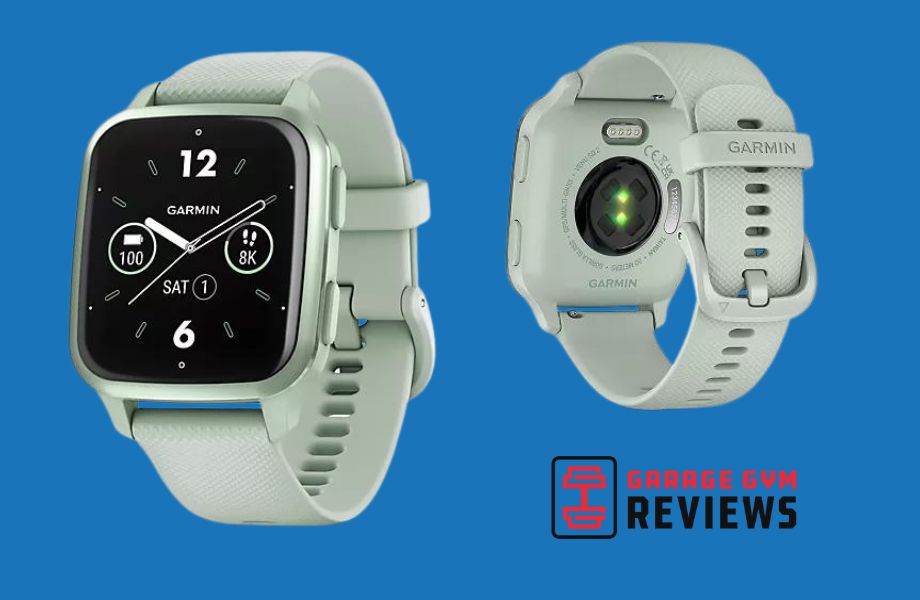Are you wondering, “How many calories should I eat per day?” If so, you might have defaulted to the classic 2,000-calorie diet guideline. The 2020-2025 Dietary Guidelines for Americans1 suggest that calorie needs can range from 1,600 to 2,400 per day for women and 2,000 to 3,000 for men, so 2,000 calories isn’t too far off.
But here’s the thing—caloric needs are as unique as you are, influenced by factors like age, activity level, and body composition. Understanding your specific calorie needs can help you fuel your body properly and achieve your health and fitness-related goals.
As a registered dietitian nutritionist (RDN), I’ll guide you through what influences your calorie needs, how to calculate them, and what to consider if you want to track them. Ready to dive in? Let’s get into it!
RELATED: How Much Carbs, Protein, and Fat Do You Need Per Day?
What Are Calories?
Calories2, or kilocalories (kcals), are a measure of energy. Scientifically speaking, a calorie is the amount of energy required to raise the temperature of 1 gram of water by 1 degree Celsius.
The three main macronutrients—carbohydrates, protein, and fat—provide our calories and are eventually converted into ATP, the energy currency our bodies use. Among these macronutrients, fats are the most energy-dense, packing 9 calories per gram, while carbs and protein each provide 4 calories per gram2.
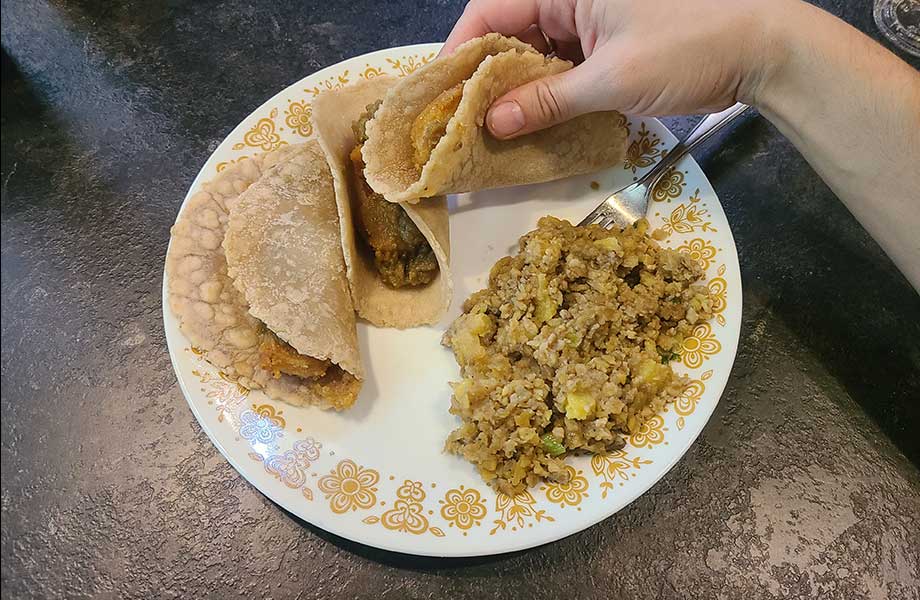
Though “calorie” and “kilocalorie” are often used interchangeably, they’re not the same (like meters and kilometers), and one kilocalorie is actually 1,000 calories. While this may cause “calorie confusion3,” imagine if a food label followed this—that half-cup of dry oats would declare a jaw-dropping 150,000 calories instead of the more modest 150 kilocalories!
Factors That Affect Your Calorie Needs
Before diving into the factors affecting energy (calorie) needs4, let’s grasp how the body burns (expends) calories, since this drives how much we should eat. Your Total Daily Energy Expenditure (TDEE) is the sum of all the energy your body requires each day and consists of three key components:
- Resting Metabolic Rate (RMR): Energy used at rest to perform essential functions like breathing, circulating blood, and producing cells, and mostly accounts for the largest portion of your TDEE (making up about 60 to 70 percent). Basal metabolic rate (BMR) is often used interchangeably and is similar, but RMR5 may better indicate daily calorie needs.
- Thermic Effect of Food (TEF): Energy used to digest, absorb, and metabolize food. TEF is a smaller part of your TDEE and can vary based on the macronutrient content of your diet.
- Physical Activity Level (PAL): All the energy you burn through movement, from structured exercise like sports to everyday activities often overlooked, known as non-exercise activity thermogenesis (NEAT)—this includes activities like fidgeting, typing, or just moving around the house. Your PAL can vary greatly depending on your lifestyle and how active you choose to be.
RELATED: Activities That Burn the Most Calories
Body Weight and Body Composition
People with different body weights naturally have varying energy6 needs at rest and during activities. Larger individuals, especially those with high activity levels, typically require more energy, while smaller individuals need less.

Age and Life Stages
Calorie needs change throughout life, beginning with a rapid increase during infancy, peaking around 15 months, and gradually decreasing through childhood and adolescence. From ages 20 to 60, these needs generally stabilize. However, they decrease again as we age due to muscle loss and slower organ function4.
Life stages like pregnancy and breastfeeding significantly impact calorie requirements. As your body supports a growing baby and undergoes various changes, your calorie needs gradually increase. For those breastfeeding, additional calories are essential to fuel milk production4.
RELATED: Best Protein Powder for Pregnancy
Activity Level
We all know the drill: The more active you are, the more calories you burn—whether you’re hitting the gym or just getting your steps in.
RELATED: Best Fitness Trackers

But here’s a curveball: Your movement economy, which is all about how much oxygen your body needs to accomplish an activity, improves as you become more trained and efficient. The fitter you get, the less oxygen—and energy—your body burns for the same workout. So, if you’re just starting, you might actually torch more calories than someone who’s been at it for years4.
So… Seasoned athletes need fewer calories? Not so fast. Research from 20188 confirms that trained individuals have a higher resting metabolic rate than those more sedentary, likely due to their higher muscle mass.
Thermic Effect of Food
Some calorie-tracking apps, like Chronometer, account for the thermic effect of food when calculating your calorie needs. But does that mean eating more will require you to eat even more? Not entirely—it’s a bit more nuanced than that.
TEF isn’t one-size-fits-all; it varies depending on your age, activity level, and what you eat. Protein-packed foods, for example, boost TEF more than fats or carbs, and bigger meals demand more energy for digestion. Active people also generally have a higher TEF, burning more calories while digesting.
How Do I Calculate How Many Calories I Need?
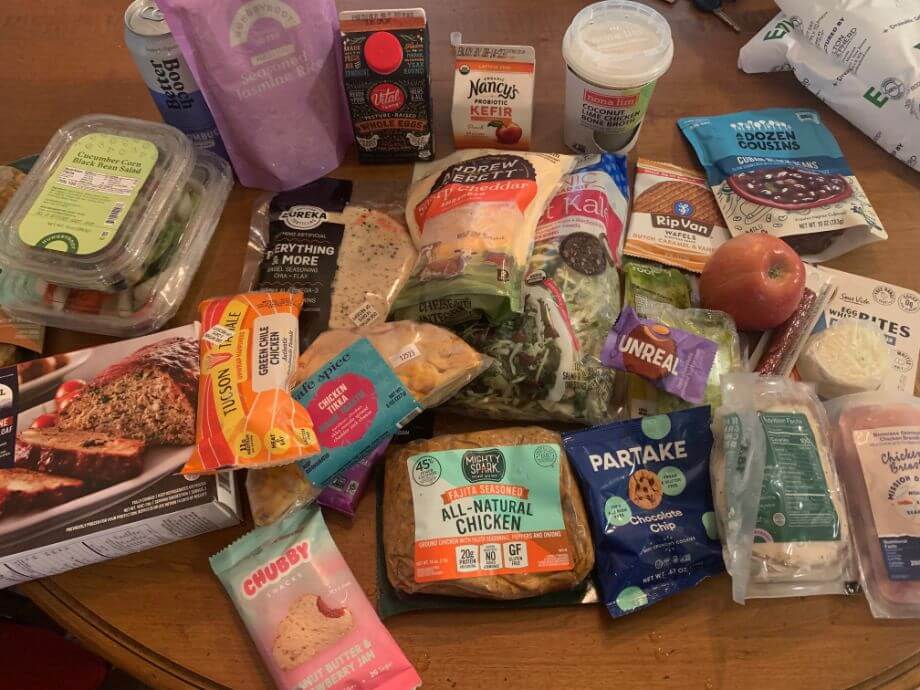
Curious about your daily calorie needs? You can use an online calorie calculator for ease or manually use the Mifflin-St. Jeor equation9, which is used within the calculator. Here’s your simple two-step guide to mastering the Mifflin-St. Jeor equation:
Step 1: Calculate Your Resting Metabolic Rate (RMR)
This is the number of calories you burn at rest. Use the following formulas based on your biological sex:
- Males: 10 x weight (kg) + 6.25 x height (cm) – 5 x age (y) + 5
- Females: 10 x weight (kg) + 6.25 x height (cm) – 5 x age (y) – 161
Conversions:
- Weight in kilograms = weight (lbs) / 2.2
- Height in centimeters = height (in) x 2.54
- Remember, there are 12 inches in 1 foot
Step 2: Adjust for Activity Level
Multiply your RMR by one of these activity factors to get your Total Daily Energy Expenditure (TDEE):
- Sedentary: 1.2
- Lightly active: 1.375
- Moderately active: 1.55
- Active: 1.725
- Very active: 1.9
Your TDEE is the total amount of calories you need daily, including your activity level.
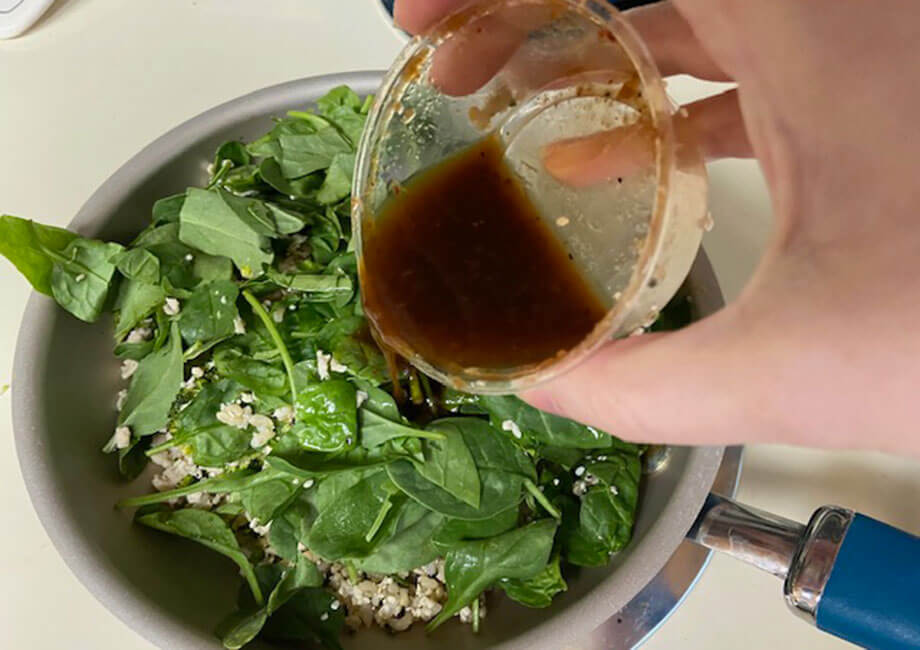
Example Calculation
Let’s say you’re a 40-year-old male, weighing 200 pounds and 6 feet tall, with a moderately active lifestyle.
- Convert those metrics into kilograms and centimeters:
- 200 pounds/2.2 = 90.2 kg
- 6’ = 6×12 = 72” x 2.54 = 182.9 cm
- Plug ‘n chug your age, weight, and height in the male’s equation:
- 10 x weight (kg) + 6.25 x height (cm) – 5 x age (y) + 5
- 10 x 90.2 (kg) + 6.25 x 182.9 (cm) – 5 x 40 (y) + 5 = 1850 calories
- Remember, use the order of operations using “PEMDAS” (Parentheses, Exponents, Multiplication, Division, Addition, Subtraction) from left to right
- Multiply your estimated RMR by the moderately active activity factor 1.55 to get your estimated TDEE:
- 1850 (RMR) x 1.55 = 2,868 calories per day
Now, how do weight goals come into play? Let’s take a look.
To Maintain Weight
To maintain your current weight, determine your Total Daily Energy Expenditure (TDEE) and match your caloric intake to that number. However, calculating your exact calorie needs can be tricky since several factors influence TDEE.
Even if you pinpoint your calorie needs, counting and tracking aren’t foolproof. The Food and Drug Administration10 (FDA) allows nutritional labels to be up to 20 percent inaccurate, and this margin of error adds another layer of complexity to maintaining, losing, or gaining weight.
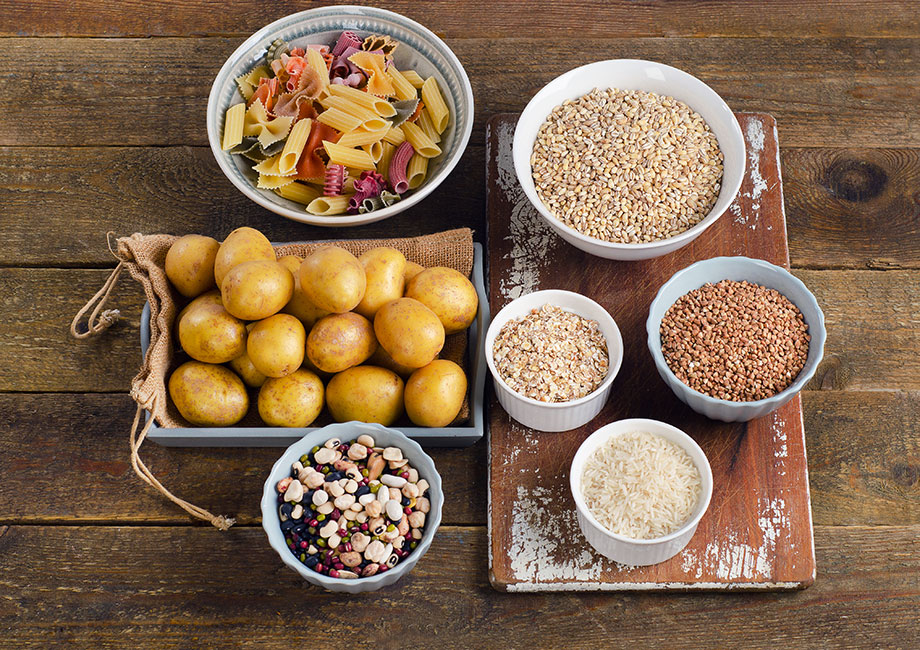
But don’t let this discourage you! While you can try calculating your daily calories, you could try a reverse engineer approach: Start tracking your food intake and weight over a week or two (even better if longer) to gauge what your body needs to maintain your weight. Plus, if you prioritize a healthy lifestyle, you should be A-OK!
Beyond weight management, you also can use this same strategy to lose or gain weight.
To Lose Weight
While weight loss can be complicated by factors like health conditions and hormonal imbalances, the basic principle remains simple: burn more calories than you consume.
For sustainable weight loss results, aim for a gradual loss of 1 to 2 pounds per week—or even less if your weight loss goal is modest. Since 1 pound of fat equals about 3,500 calories, a daily calorie deficit of 250 to 500 calories can help you achieve your weekly target.
Remember, too, that you could track your food and weight to gauge trends, manipulating calories as you go. Also consider tracking macros for weight loss instead of solely focusing on calories, as getting a proper balance of nutrients is essential for overall health.
And you know we have to say it: These general recommendations are not a replacement for expert guidance from a healthcare professional.
To Gain Weight
To gain 1 pound a week, general guidelines11 suggest adding 500 calories to your daily intake. If you’re aiming for a more modest half-pound gain, reducing that increase to 250 calories could do the trick. On the other hand, bumping it up to 1,000 calories might help you pack on 2 pounds weekly.
However, if you want to gain weight fast, we encourage seeking medical advice. Rapid weight gain can bring its own set of challenges, including obesity, heart disease, and other health risks.
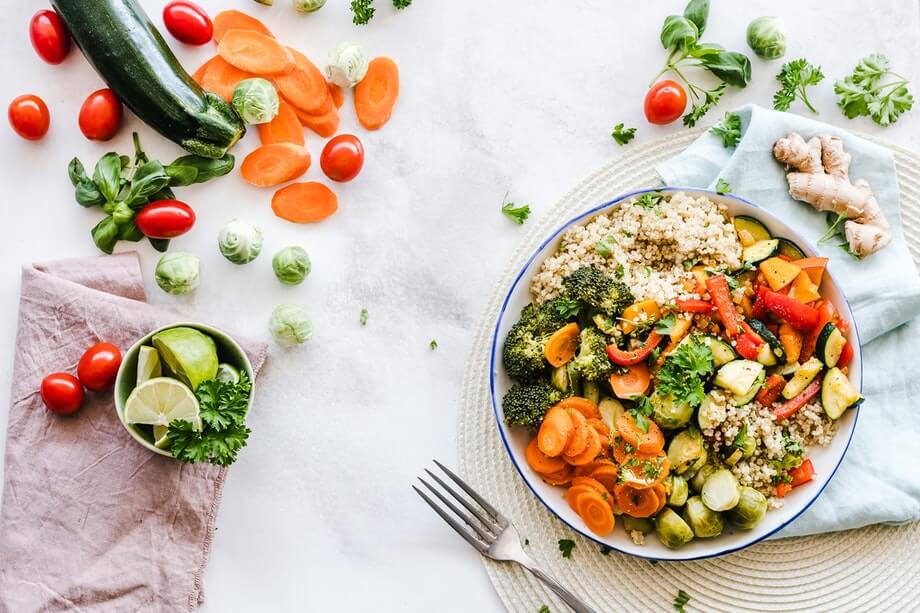
Plus, while it’s true that you need a calorie surplus to gain weight, don’t solely fixate on the numbers. The quality of your diet—rich in whole grains, fruits, veggies, lean proteins, and healthy fats—is just as crucial for overall well-being.
What Is a Calorie Deficit?
A calorie deficit is when you consume fewer calories than you burn. It’s the most important factor in weight loss, according to a 2021 review12.
Most experts agree that aiming for a weekly calorie deficit of about 3,500 calories—roughly 500 calories per day—supports steady, controlled weight loss without compromising your body’s vital physiological functions.
While diet and exercise impact your calorie balance, adjusting your diet often delivers quicker results. For instance, the amount of calories walking a mile burns is about 90 calories for a 170-pound woman, which is easily offset by a few bites of a candy bar. Cardio is essential for cardiovascular health, but more efficient methods exist for creating a calorie deficit.
Instead, focus on reducing your calorie intake while ensuring those calories come from a balanced mix of macronutrients to nourish your body. Adopting healthy eating habits—like cooking with low-fat ingredients, increasing fiber, and controlling portion sizes—can help you manage your weight more effectively.
Calories In Common Foods
Listing the calories in every common food would be an endless task, but we can focus on the core food groups13 and frequently consumed options, as per the FDA14.

These values come from the FoodData Cental15, a food database provided by the U.S. Department of Agriculture (USDA). However, keep in mind that calorie counts can vary based on preparation methods and specific brands, so double-check if you’re counting or tracking calories closely.
Vegetables
- Broccoli (1 cup, chopped): 31 calories
- Carrot (1 medium, raw): 25 calories
- Cucumber (0.5 cup, slices with peel): 8 calories
- Cauliflower (1 cup, raw): 27 calories
- Portabella mushrooms (1 cup, diced): 19 calories
- Potato (1 medium with skin, baked): 161 calories
- Spinach (1 cup, raw): 7 calories
Fruits
- Apple (1 medium with skin): 95 calories
- Banana (1 medium): 105 calories
- Blueberries (1 cup, raw): 85 calories
- Grapes (1 cup): 121 calories
- Strawberries (1 cup, halves): 49 calories
- Pineapple (1 cup, chunks): 74 calories
- Peach (1 medium): 59 calories
- Watermelon (1 cup, diced): 46 calories
Grains
- White bread (1 slice): 77 calories
- Whole wheat bread (1 slice): 81 calories
- White rice (1 cup, cooked): 205 calories
- Pasta (1 cup, cooked): 220 calories
- Oats (½ cup, dry): 154 calories
Animal and Plant-Based Proteins
- Salmon (3 oz wild, cooked): 155 calories
- Beef (3 oz ground, 80% lean, cooked): 230 calories
- Chicken breast (3 oz grilled, skinless): 128 calories
- Egg (1 large, raw): 72 calories
- Kidney beans (1 cup, cooked): 225 calories
- Salmon (3 oz wild, cooked): 155 calories
- Tofu (¼ block, raw): 88 calories
Dairy
- Cheddar cheese (¼ cup, shredded): 110 calories
- Cottage cheese (1 cup, low-fat): 180 calories
- Greek yogurt (1 container, plain, nonfat) 100 calories
- Whole milk (1 cup) 149 calories
Fats and Oils
- Almonds (23 whole): 164 calories
- Avocado (1 avocado): 322 calories
- Butter (1 Tbsp): 102 calories
- Pecans (19 halves) 196 calories
- Olive oil (1 Tbsp) 119 calories
Snack Foods and Sweet Treats
- Chocolate chip cookie (1 medium): 78 calories
- Crackers (5 crackers): 82 calories
- Potato chips (22 chips): 149 calories
- Vanilla ice cream (½ cup): 137 calories
How Many Calories Should I Eat Per Day? Final Thoughts
Our daily calorie needs are much more individualized than the general 2,000-calorie recommendation. Here are the final takeaways about how many calories to eat per day:
- Many factors influence energy expenditure and needs, including age, body composition, and activity levels.
- Online calculators and equations can help you determine calorie needs, but remember, there’s always a margin of error.
- Weight goals influence needs, and health experts generally recommend not exceeding a deficit or surplus of 500 calories for safe results.
- Calories come from food, but so do nutrients—aim to consume a balanced diet of high-quality foods from all macronutrient groups for optimal health.
How Many Calories Should I Eat Per Day? FAQs
How many calories should I eat a day to lose weight?
To determine how many calories you should eat daily to lose weight, first find your maintenance calories using an online calculator or the Mifflin St. Jeor Equation. Then, aim for a daily calorie deficit of 250 to 500 calories to achieve a safe weight loss of 1 to 2 pounds per week. For example, if your maintenance calories are 2,500, you’d aim to eat between 2,000 and 2,250 calories daily.
Is it healthy to eat 1,200 calories per day?
While a 1,200-calorie diet might be suggested as an initial weight loss strategy, it’s essential to proceed cautiously. Such a low-calorie intake is generally not advised for long-term weight maintenance and is ideally medically supervised.
How many calories should I eat a day by age?
A healthcare professional can help determine your calorie needs based on age, but tools like an online calculator, the Mifflin St. Jeor Equation, and the Dietary Guidelines for Americans can also provide guidance.
How should I calculate my daily calorie intake?
You can estimate your daily calorie using an online calculator or the Mifflin St. Jeor Equation.
References
- United States Department of Agriculture. (2020). Dietary Guidelines for Americans 2020-2025. USDA. https://www.dietaryguidelines.gov/sites/default/files/2020-12/Dietary_Guidelines_for_Americans_2020-2025.pdf
- Osilla, E. V., & Sandeep Sharma. (2019, June 18). Calories. Nih.gov; StatPearls Publishing. https://www.ncbi.nlm.nih.gov/books/NBK499909/
- Hargrove J. L. (2007). Does the history of food energy units suggest a solution to “Calorie confusion”?. Nutrition Journal, 6, 44. https://doi.org/10.1186/1475-2891-6-44
- National Academies of Sciences. (2023, January 17). Factors Affecting Energy Expenditure and Requirements. Www.ncbi.nlm.nih.gov; National Academies Press (US). https://www.ncbi.nlm.nih.gov/books/NBK591031/
- McMurray, R. G., Soares, J., Caspersen, C. J., & McCurdy, T. (2014). Examining variations of resting metabolic rate of adults: a public health perspective. Medicine and Science In Sports and Exercise, 46(7), 1352–1358. https://doi.org/10.1249/MSS.0000000000000232
- National Research Council (US) Subcommittee on the Tenth Edition of the Recommended Dietary Allowances. (1989). Energy. In www.ncbi.nlm.nih.gov. National Academies Press (US). https://www.ncbi.nlm.nih.gov/books/NBK234938/
- Body Composition – an overview | ScienceDirect Topics. (2013). Sciencedirect.com. https://www.sciencedirect.com/topics/agricultural-and-biological-sciences/body-composition
- Fonseca, D. C., Sala, P., de Azevedo Muner Ferreira, B., Reis, J., Torrinhas, R. S., Bendavid, I., & Linetzky Waitzberg, D. (2018). Body weight control and energy expenditure. Clinical Nutrition Experimental, 20, 55–59. https://doi.org/10.1016/j.yclnex.2018.04.001
- Dwyer, J. T., Melanson, K. J., Sriprachy-anunt, U., Cross, P., & Wilson, M. (2015, February 28). Table 12, [Estimating Resting Metabolic Rate]. Www.ncbi.nlm.nih.gov. https://www.ncbi.nlm.nih.gov/books/NBK278991/table/diet-treatment-obes.table12est/
- Center for Food Safety and Applied Nutrition. (2019). Guidance on Developing and Using Data Bases for Nutrition Labeling. U.S. Food and Drug Administration. https://www.fda.gov/regulatory-information/search-fda-guidance-documents/guidance-industry-guide-developing-and-using-data-bases-nutrition-labeling
- Rankin J. W. (2002). Weight loss and gain in athletes. Current Sports Medicine Reports, 1(4), 208–213. https://doi.org/10.1249/00149619-200208000-00004
- Kim J. Y. (2021). Optimal Diet Strategies for Weight Loss and Weight Loss Maintenance. Journal of Obesity & Metabolic Syndrome, 30(1), 20–31. https://doi.org/10.7570/jomes20065
- National Institute on Aging. (2022, February 25). Healthy eating as you age: Know your food groups. National Institute on Aging. https://www.nia.nih.gov/health/healthy-eating-nutrition-and-diet/healthy-eating-you-age-know-your-food-groups
- Center for Food Safety and Applied Nutrition. (2019). Guidance For Industry Food Labeling Guide. U.S. Food and Drug Administration.
- U.S. Department of Agriculture. (2019). FoodData Central. Usda.gov. https://fdc.nal.usda.gov/





